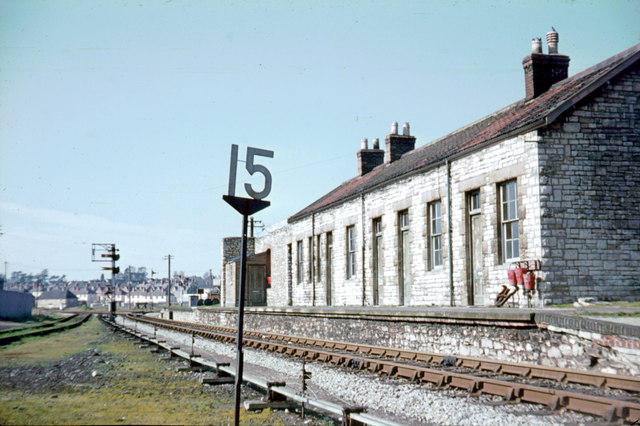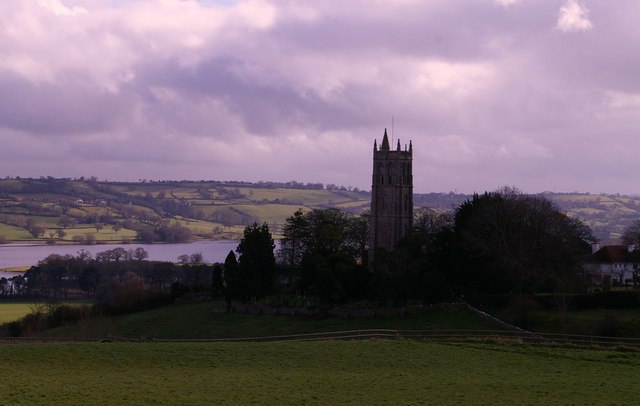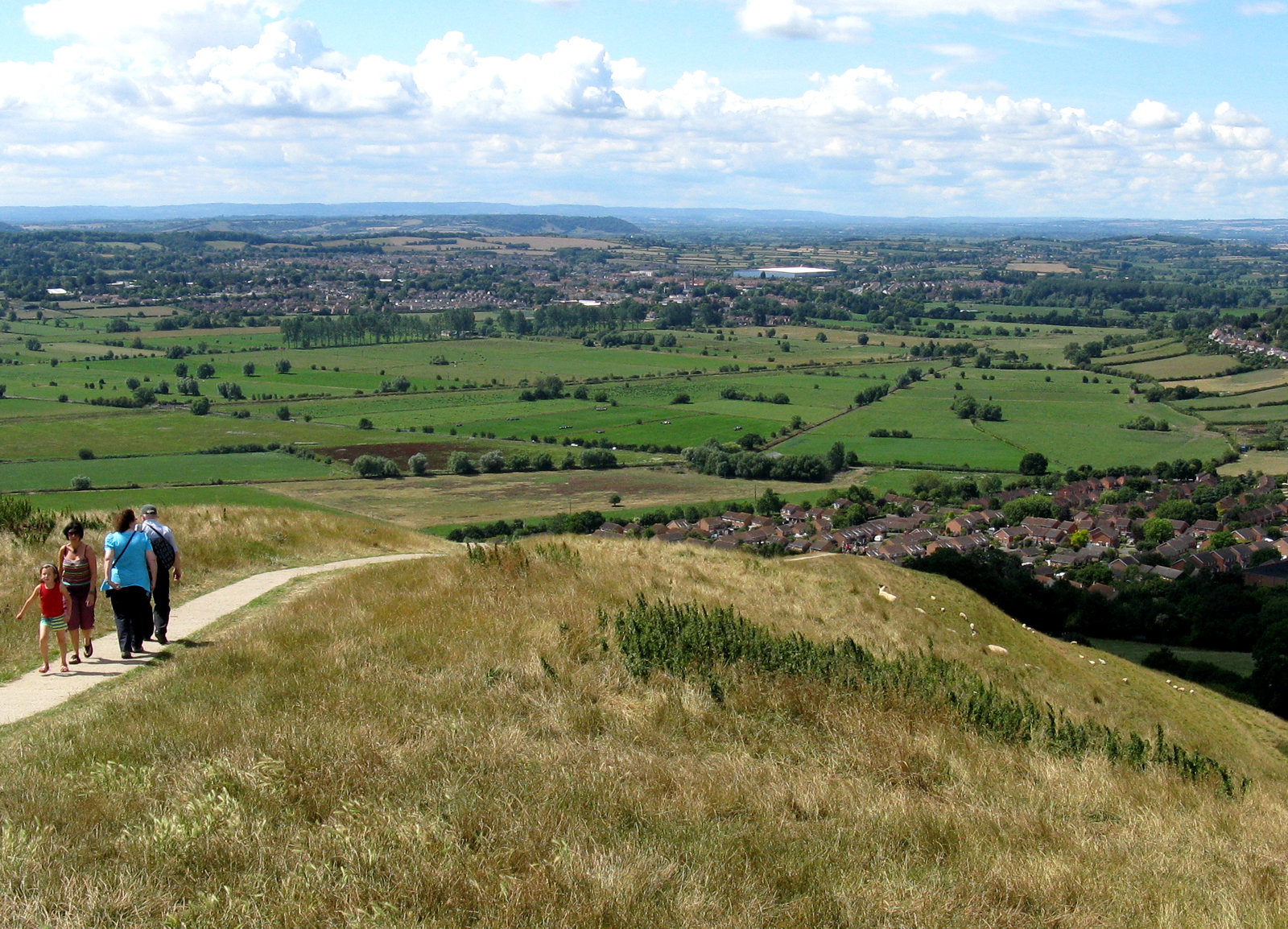|
Cheddar Valley Line
The Cheddar Valley line was a railway line in Somerset, England, running between Yatton and Witham. It was opened in parts: the first section connecting Shepton Mallet to Witham, later extended to Wells, was built by the East Somerset Railway from 1858. Later the Bristol and Exeter Railway built their branch line from Yatton to Wells, but the two lines were prevented for a time from joining up. Eventually the gap was closed, and the line became a simple through line, operated by the Great Western Railway. The line became known as ''The Strawberry Line'' because of the volume of locally-grown strawberries that it carried. It closed in 1963. Sections of the former trackbed have been opened as the ''Strawberry Line Trail'', which runs from Yatton to Cheddar. The southern section operates as a heritage railway using the name East Somerset Railway. History Main line railways Important inland market towns suddenly found themselves at a huge disadvantage when trunk railways connected ... [...More Info...] [...Related Items...] OR: [Wikipedia] [Google] [Baidu] |
British Rail
British Railways (BR), which from 1965 traded as British Rail, was a state-owned company that operated most of the overground rail transport in Great Britain from 1948 to 1997. It was formed from the nationalisation of the Big Four British railway companies, and was privatised in stages between 1994 and 1997. Originally a trading brand of the Railway Executive of the British Transport Commission, it became an independent statutory corporation in January 1963, when it was formally renamed the British Railways Board. The period of nationalisation saw sweeping changes in the railway. A process of dieselisation and electrification took place, and by 1968 steam locomotives had been entirely replaced by diesel and electric traction, except for the Vale of Rheidol Railway (a narrow-gauge tourist line). Passengers replaced freight as the main source of business, and one-third of the network was closed by the Beeching cuts of the 1960s in an effort to reduce rail subsidies. On privatis ... [...More Info...] [...Related Items...] OR: [Wikipedia] [Google] [Baidu] |
Yeovil
Yeovil ( ) is a town and civil parishes in England, civil parish in the district of South Somerset, England. The population of Yeovil at the last census (2011) was 45,784. More recent estimates show a population of 48,564. It is close to Somerset's southern border with Dorset, from London, south of Bristol, from Sherborne and from Taunton. The aircraft and defence industries which developed in the 20th century made it a target for bombing in the Second World War; they are still major employers. Yeovil Country Park, which includes Ninesprings, is one of several open spaces with educational, cultural and sporting facilities. Religious sites include the 14th-century Church of St John the Baptist, Yeovil, Church of St John the Baptist. The town is on the A30 road, A30 and A37 road, A37 roads and has two railway stations. History Archaeological surveys have yielded Palaeolithic burial and settlement sites mainly to the south of the modern town, particularly in Hendford, where a ... [...More Info...] [...Related Items...] OR: [Wikipedia] [Google] [Baidu] |
Blagdon
Blagdon is a village and civil parish in the ceremonial county of Somerset, within the unitary authority of North Somerset, in England. It is located in the Mendip Hills, a recognised Area of Outstanding Natural Beauty. According to the 2011 census it has a population of 1,116. The village is about east of Weston-super-Mare on the A368 between Churchill and Compton Martin. History The village was called ''Blachedon'' in the 1086 Domesday Book and the name comes from the Old English ''bloec'' and ''dun'' meaning 'the black or bleak down'. Romans There was a Roman presence in Blagdon from about 49 AD until the end of the Roman occupation of Britain. Several Roman coins and fragments of Roman pottery have been found in the village. There were lead and silver workings in Charterhouse, about a mile and a half uphill to the south, so it is likely that the wealthier supervisors had their houses away from the toxic smoke in the village. Wade and Wade in their 1929 book ''Somers ... [...More Info...] [...Related Items...] OR: [Wikipedia] [Google] [Baidu] |
Glastonbury And Street Railway Station
Glastonbury and Street railway station was the biggest station on the original Somerset and Dorset Joint Railway main line from Highbridge to Evercreech Junction until closed in 1966 under the Beeching axe. It was the junction for the short branch line to Wells which closed in 1951. Opened in 1854 as Glastonbury, and renamed in 1886, it had three platforms, two for Evercreech to Highbridge services and one for the branch service to Wells. The station had a large goods yard controlled from a signal box In signal processing, a signal is a function that conveys information about a phenomenon. Any quantity that can vary over space or time can be used as a signal to share messages between observers. The ''IEEE Transactions on Signal Processing'' .... Services The site today The site is now used by a timber merchant and for storage. Replica level crossing gates have been placed at the entrance. The former railway station canopy is now used as a shelter in the market area ... [...More Info...] [...Related Items...] OR: [Wikipedia] [Google] [Baidu] |
2008 At Cheddar Station Site - Goods Shed
8 (eight) is the natural number following 7 and preceding 9. In mathematics 8 is: * a composite number, its proper divisors being , , and . It is twice 4 or four times 2. * a power of two, being 2 (two cubed), and is the first number of the form , being an integer greater than 1. * the first number which is neither prime nor semiprime. * the base of the octal number system, which is mostly used with computers. In octal, one digit represents three bits. In modern computers, a byte is a grouping of eight bits, also called an octet. * a Fibonacci number, being plus . The next Fibonacci number is . 8 is the only positive Fibonacci number, aside from 1, that is a perfect cube. * the only nonzero perfect power that is one less than another perfect power, by Mihăilescu's Theorem. * the order of the smallest non-abelian group all of whose subgroups are normal. * the dimension of the octonions and is the highest possible dimension of a normed division algebra. * the first number ... [...More Info...] [...Related Items...] OR: [Wikipedia] [Google] [Baidu] |
Wells RCH Diagram
Wells most commonly refers to: * Wells, Somerset, a cathedral city in Somerset, England * Well, an excavation or structure created in the ground * Wells (name) Wells may also refer to: Places Canada *Wells, British Columbia England * Wells (Priory Road) railway station was a railway station in Wells, Somerset * Wells (Tucker Street) railway station was a railway station in Wells, Somerset * Wells (UK Parliament constituency), the UK parliamentary constituency in which the city of Wells, Somerset, is located * Wells-next-the-Sea, town and port in Norfolk ** Wells-on-Sea railway station was a railway station in Wells-next-the-Sea Scotland * Wells, Roxburghshire, a Scottish feudal barony United States *Wells, California, former name of Keene, California * Wells, Indiana *Wells, Kansas *Wells, Maine *Wells, Minnesota * Wells, Mississippi *Wells, Nevada *Wells, New York, a town ** Wells (CDP), New York, a census-designated place in the town *Wells, Texas *Wells, Vermont, a New En ... [...More Info...] [...Related Items...] OR: [Wikipedia] [Google] [Baidu] |
Wells Tucker Street Goods Shed
Wells most commonly refers to: * Wells, Somerset, a cathedral city in Somerset, England * Well, an excavation or structure created in the ground * Wells (name) Wells may also refer to: Places Canada *Wells, British Columbia England * Wells (Priory Road) railway station was a railway station in Wells, Somerset * Wells (Tucker Street) railway station was a railway station in Wells, Somerset * Wells (UK Parliament constituency), the UK parliamentary constituency in which the city of Wells, Somerset, is located * Wells-next-the-Sea, town and port in Norfolk ** Wells-on-Sea railway station was a railway station in Wells-next-the-Sea Scotland * Wells, Roxburghshire, a Scottish feudal barony United States *Wells, California, former name of Keene, California * Wells, Indiana *Wells, Kansas *Wells, Maine *Wells, Minnesota * Wells, Mississippi *Wells, Nevada *Wells, New York, a town ** Wells (CDP), New York, a census-designated place in the town *Wells, Texas *Wells, Vermont, a New En ... [...More Info...] [...Related Items...] OR: [Wikipedia] [Google] [Baidu] |
Street, Somerset
Street is a large village and civil parish in Somerset, England, with a population of 11,805 in 2011. On a dry spot in the Somerset Levels, at the end of the Polden Hills, it is south-west of Glastonbury. There is evidence of Roman occupation. Much of the history of the village is dominated by Glastonbury Abbey, and a 12th-century causeway from Glastonbury built to transport local Blue Lias stone to it. The Society of Friends was established there by the mid-17th century. One Quaker family, the Clarks, started a business in sheepskin rugs, woollen slippers and, later, boots and shoes. This became C&J Clark which still has its headquarters in Street. In 1993, redundant factory buildings were converted to form Clarks Village, the first purpose-built factory outlet in the United Kingdom. The Shoe Museum provides information about the history of Clarks and footwear manufacture in general. The Clark family's former mansion and its estate at the edge of the village are now owned ... [...More Info...] [...Related Items...] OR: [Wikipedia] [Google] [Baidu] |
Priory Road Wells Station
A priory is a monastery of men or women under religious vows that is headed by a prior or prioress. Priories may be houses of mendicant friars or nuns (such as the Dominicans, Augustinians, Franciscans , image = FrancescoCoA PioM.svg , image_size = 200px , caption = A cross, Christ's arm and Saint Francis's arm, a universal symbol of the Franciscans , abbreviation = OFM , predecessor = , ..., and Carmelites), or monasteries of monks or nuns (as with the Benedictines). Houses of canon regular, canons regular and canonesses regular also use this term, the alternative being "canonry". In English Reformation, pre-Reformation England, if an abbey church was raised to cathedral status, the abbey became a cathedral priory. The bishop, in effect, took the place of the abbot, and the monastery itself was headed by a prior. History Priories first came to existence as subsidiaries to the Cluny Abbey, Abbey of Cluny. Many new h ... [...More Info...] [...Related Items...] OR: [Wikipedia] [Google] [Baidu] |
Board Of Trade
The Board of Trade is a British government body concerned with commerce and industry, currently within the Department for International Trade. Its full title is The Lords of the Committee of the Privy Council appointed for the consideration of all matters relating to Trade and Foreign Plantations, but is commonly known as the Board of Trade, and formerly known as the Lords of Trade and Plantations or Lords of Trade, and it has been a committee of the Privy Council of the United Kingdom. The board has gone through several evolutions, beginning with extensive involvement in colonial matters in the 17th century, to powerful regulatory functions in the Victorian Era and early 20th century. It was virtually dormant in the last third of 20th century. In 2017, it was revitalised as an advisory board headed by the International Trade Secretary who has nominally held the title of President of the Board of Trade, and who at present is the only privy counsellor of the board, the other m ... [...More Info...] [...Related Items...] OR: [Wikipedia] [Google] [Baidu] |
William Yolland
William Yolland CB, FRS FRSA (17 March 1810 – 4 September 1885) was an English military surveyor, astronomer and engineer, and was Britain's Chief Inspector of Railways from 1877 until his death. He was a redoubtable campaigner for railway safety, often in the face of strong opposition, at a time when railway investment was being directed towards the expansion of the networks rather than the prevention of accidents. He was a member of the three-man committee of inquiry into the Tay Bridge disaster.Vetch (2004) Career Yolland was born in Plympton St Mary, Devon, the son of the land agent to Lord Morley, Plymouth, and his father promoted the boy's interest in surveying and land management by enrolling him at a school specialising in mathematics. He was commissioned into the Royal Engineers in 1828 and completed his technical training at the Royal School of Military Engineering in Chatham, Kent, in 1831. Ordnance Survey After army service in Britain, Ireland and Canada he was p ... [...More Info...] [...Related Items...] OR: [Wikipedia] [Google] [Baidu] |
Highbridge, Somerset
Highbridge is a market town on the edge of the Somerset Levels near the mouth of the River Brue. It is in the County of Somerset, and is about northeast of Taunton, the county town of Somerset. No longer a market town, the market site is now a housing estate. Highbridge is in the District of Sedgemoor, being about north of Bridgwater, the district's administrative centre. Highbridge closely neighbours Burnham-on-Sea, forming part of the combined parish of Burnham-on-Sea and Highbridge and shares a town council with the resort town. The 2001 Census recorded Highbridge's population as 5,986. In the 2011 Census the population of the town was included in the ward of Highbridge and Burnham Marine, which totalled 7,555. History There is archaeological evidence of occupation around the Highbridge area at least as far back as the Roman period. There has been a bridge over the River Brue here since the 14th century and it has always been an important crossing on the route from Bristol ... [...More Info...] [...Related Items...] OR: [Wikipedia] [Google] [Baidu] |

.jpg)




